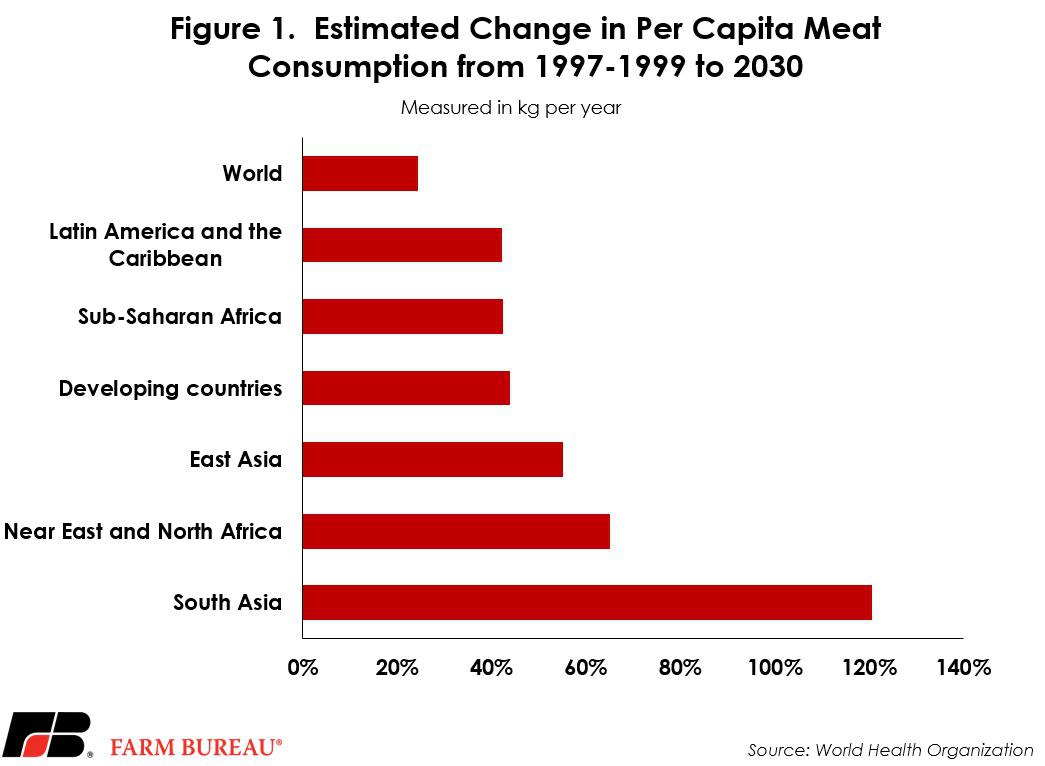Benefits of Investing in Global Agricultural R&D Spill Over to U.S. Farmers
Megan Nelson
Economic Analyst

photo credit: Alabama Farmers Federation, Used with Permission
Megan Nelson
Economic Analyst
Agricultural research, whether it’s conducted here in the United States or abroad, has forever transformed the landscape of farming. From the hybridization of plant species and the production of biofuels to the utilization of precision agricultural technologies, when countries invest in agricultural research, the world benefits. Additionally, providing economic development programs to developing countries reduces poverty rates and increases purchasing power, which expands market opportunities for U.S. farmers. According to the USDA’s Foreign Agricultural Service, the U.S. provided $49.87 billion, or 1.2% of total U.S. gross domestic product, in assistance to developing countries, with 44% of that dedicated to economic development programs.
For decades, the U.S. has leveraged agricultural research and economic development assistance to developing countries into new market access and potential future trading partners. These assistance efforts have a positive impact on the U.S. economy and employees through direct and indirect spillover benefits.
This Market Intel article will focus on the spillover benefits to U.S. producers from agricultural R&D in developing countries. Spillover benefits occur when the consumption of a good or service by one group of individuals positively impacts a third party.
Direct Spillover Benefits
Direct spillover benefits of U.S.-funded agricultural R&D in developing countries come from international research efforts to develop nutrient-enriched and disease-resistance seed strains. The International Maize and Wheat Improvement Center, a partner of the United States Agency for International Development, estimates the organization generates benefits of $3.5 billion to $4 billion every year. In its 2018 annual report, the organization announced the release of 48 wheat varieties and 81 corn varieties throughout the world. New stress-tolerant corn varieties were planted by 3.5 million farmers in Sub-Saharan Africa, while more than 102,000 farmers throughout South Asia utilized innovative farm machinery, zero tillage or advanced seeding dates as part of the organization’s efforts. Benefits exclusive to the U.S. are valued at $140 million to $180 million, with a cost-to-benefit ratio of 32:1 from research projects improving wheat productivity alone.
Another example of the direct benefits associated with collective research is under USAID’s Feed the Future program at the Grain Legumes Innovation Lab, which is led by Michigan State University. The new Zorro black bean variety, the number one variety grown in Michigan, is a new, upright, high-yielding variety that is estimated to increase the value to growers by $10 million per year. Much of the increased value to farmers comes from reduced production costs from being able to easily harvest due to the upright nature of the stalk.
Indirect Spillover Effects
Other spillover benefits that come from U.S. investment in agricultural R&D in developing countries stems from the growth of new markets. According to the United Nations Conference on Trade and Development, agriculture accounts for 22% of GDP and employs two-thirds of the labor force in the least developed countries. Therefore, an investment in agricultural productivity bolsters both the agriculture sector and the overall economy by raising incomes and increasing the country’s GDP. As developing countries’ income levels rise, so do taste preferences, leading to an increased demand for high-quality protein, creating additional markets for U.S. farm and ranch products.
According to USDA, since the 1990s per capita meat consumption for beef and veal, pork, poultry and sheep has grown about 3% annually in developing and emerging economies. As taste preferences and diet patterns shift as incomes increase, most of the gains in meat consumption are focused in developing countries, where the demand for meat is outpacing that of developed countries.
Based on data from the World Health Organization, meat consumption in developing countries is estimated to increase 44% by 2030, representing a 25 lbs.-per-year increase per capita from 1999. The largest increases in meat consumption are estimated in South Asia with a 121% jump predicted by 2030. Figure 1 illustrates the estimated change in meat consumption from levels realized in 1997 through 1999 compared to 2030.

Summary
Agricultural R&D is critical to the upward trajectory of U.S. agriculture. Continued investment in the stabilization of new markets in developing countries, as well as the development of technology for farmers and ranchers in the U.S., is essential for the growth and future of farming.
Investments in agricultural research are proven to provide consistently high rates of return, with an estimated 32% of the investment in research by the International Maize and Wheat Improvement Center coming back to U.S. agriculture. And that’s just one example. Investments in agricultural research have proven to be particularly impactful in developing countries with robust agriculture sectors that provide a significant number of the country’s jobs. Therefore, even small productivity gains create large ripples of prosperity throughout a developing economy. These ripples tend to spillover to U.S. producers as the demand for quality proteins increases along with the country’s income levels.
Top Issues
VIEW ALL